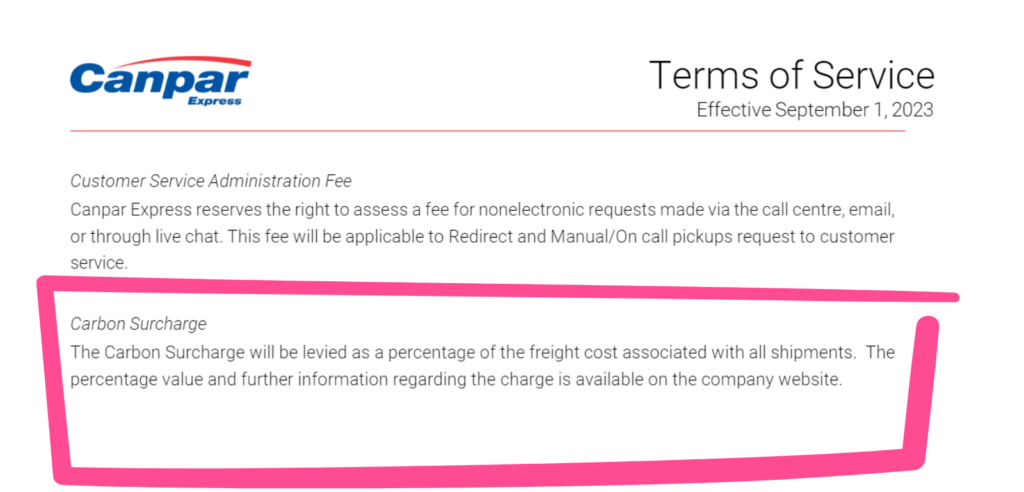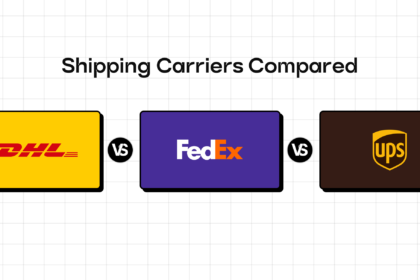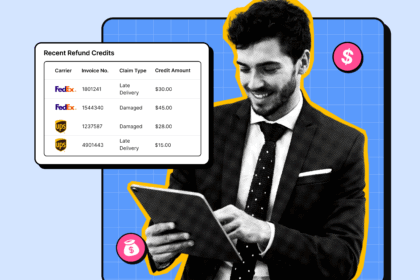Major carriers all around the world increase the rates of their services at an average of 4 – 6% YoY.
While carriers transfer this burden of inflation to shippers via increased merchants, most merchants do not do the same to their customers but instead absorb shipping costs as a marketing technique to attract customers.
Returning to rate increases, carriers often cite reasons such as inflation around fuel surcharges and worker demand (particularly around the holiday season), and with the shipper on the onus of these increased rates, shipping is becoming costlier yearly!
If you’re an e-commerce merchant looking to cut down on shipping costs that are eating into your profits, this article is for you. Because not just the usual reasons, but there are instances where unexpected actions can create a domino effect that affects the entire supply chain and causes an increase in shipping rates (remember the surge that happened because of COVID-19?).
One such reason has taken shape in the last year and that is the rate increase in ‘Carbon surcharge’, which while looking trivial, has a role to play in making your shipping bills expensive.
Introducing Carbon Surcharge
Before meeting the carbon surcharge, it is important to understand where it comes from: Carbon taxes.
Multiple industries throughout the globe contribute significantly to emissions, and the shipping industry is no exception. But as the world is increasingly becoming aware of the environmental impacts of carbon emissions, they are indeed taking steps to reduce their carbon footprints.
One of the latest measures introduced to address this issue is the Carbon Tax, one levied on fossil fuel purchases, which is intended to encourage Canadians to reduce their consumption of polluting fuels.
In Canada, the carbon tax, also referred to as the price on carbon, first came into effect at $20 per tonne in October 2019. It has gone up since then, and reached $80 per tonne on April 1, 2024, up $15, from its previous cost of $65 per tonne.
While the carbon tax is set to impact every Canadian, it is set to impact shippers like you even more as carriers such as Canpar, have found a way to levy and increase the rate of ‘carbon surcharge’ for packages shipped through them.

In Canpar’s press release, they highlight that this surcharge affects multiple aspects of the economy and impacts costs across their entire network ranging from transportation costs to energy costs for heating, to equipment purchases and maintenance and hence, the rate increase.
Additionally, they mention that it has become necessary for them to apply a Carbon Surcharge of 2.5% effective from September 1st, 2023, for all shipments handled by them.
How is the Carbon Surcharge Calculated?
The Carbon Surcharge is typically calculated based on the amount of carbon dioxide (CO2) emissions produced during the shipping process. Factors influencing the surcharge include:
- Distance Traveled: Longer shipping distances generally result in higher CO2 emissions.
- Mode of Transport: Different transportation methods have varying emission levels. For instance, air freight has a higher carbon footprint compared to sea or rail freight.
- Weight and Volume: Heavier and bulkier shipments require more energy to transport, leading to higher emissions and, consequently, a higher surcharge.
Shipping companies may use carbon calculators or partner with environmental organizations to accurately assess and apply the surcharge.
What Does The Increase In Carbon Surcharge Mean For Businesses?
While Canpar has announced an increase in its carbon surcharge, citing financial and operational considerations, this move brings in specific challenges and opportunities for businesses that ship parcels with Canpar.
Increased Shipping Costs
For the elephant in the room, i,e, the most immediate impact of the increased carbon surcharge is the rise in shipping costs. If you’re a shipper that relies on Canpar for your logistics, you will see an uptick in their operational expenses that may affect your profit margins and force you to reevaluate your pricing strategies to accommodate the additional costs.
Additionally, you will need to adjust their budgets to account for the higher costs associated with the increased surcharge. This might require reallocating resources from other areas or finding ways to optimize operations to absorb this additional expense.
Supply Chain Optimization
The increase in the carbon surcharge by Canpar also encourages you to take a closer look at your supply chain and logistics operations.
For instance, you can:
- Find the most efficient routes to reduce travel distance and time can help mitigate the impact of higher surcharges.
- Combine shipments to reduce the number of trips can lead to reduced surcharge’s impact
- Explore different shipping methods that may have lower carbon footprints compared to those with a higher surcharge, as a strategic move.
How Businesses Can Lower Their Shipping Costs And Make Profits
Carriers can afford to increase their surcharges and transfer the burden of inflation on you. But in most cases, you cannot afford to do that. Given that customers are picky with shipping costs and often go to the extent of expecting free shipping from the businesses they shop with, you are set to face the brunt of it.
So, what can do if you’re looking to cut down costs and reduce the impact of these surcharges? Of course, you can always settle with the option of reallocating budgets and optimizing supply chain routes. But what if I told you that there are even better options?
And that is to audit your shipping invoice, check for incorrect surcharges and overcharges, and claim full refunds for them. You can do this manually, exhausting all your time and resources or make use of an automated solution like LateShipment.com that eases your job.
How LateShipment.com’s automated shipping audit and refunds work
LateShipment.com automatically audits your invoices end-to-end (every invoice goes through a rigorous 160 data-point check, validating each charge against your shipping transactions, payment terms, and waivers) to identify service failures and billing discrepancies eligible for refunds.
The best part is that our automated systems promptly submit refund claims, in compliance with the carrier’s terms and conditions, securing all eligible refund credits, and ensuring that no surcharge is left out.
Also, our systems come with a surcharge spend analytics that helps you Understand surcharge patterns and their impact on shipping costs to keep you better positioned while negotiating parcel contract rates that work in your favor.
There’s a lot more you can do with LateShipment.com. Make sure you check it and ensure that you can try to cut down your shipping costs by as much as 20%.
Conclusion
Surcharges like the carbon surcharge represent a pivotal shift in the shipping industry. They are here to stay, increase, and take new forms as time passes. Of course, they reflect a growing environmental commitment and promote sustainability. But from the perspective of shipping carriers, the carbon tax is just an additional expenditure they’d like to pass on to shippers like you.
Again, there’s no blaming carriers for increasing surcharges to meet their ends, they work on your behalf after all. But that doesn’t mean you simply keep paying shipping carriers more than you ought to. Keep your invoices in check, claim refunds wherever you can, and ultimately ensure better performances from them for the costs that you pay.











